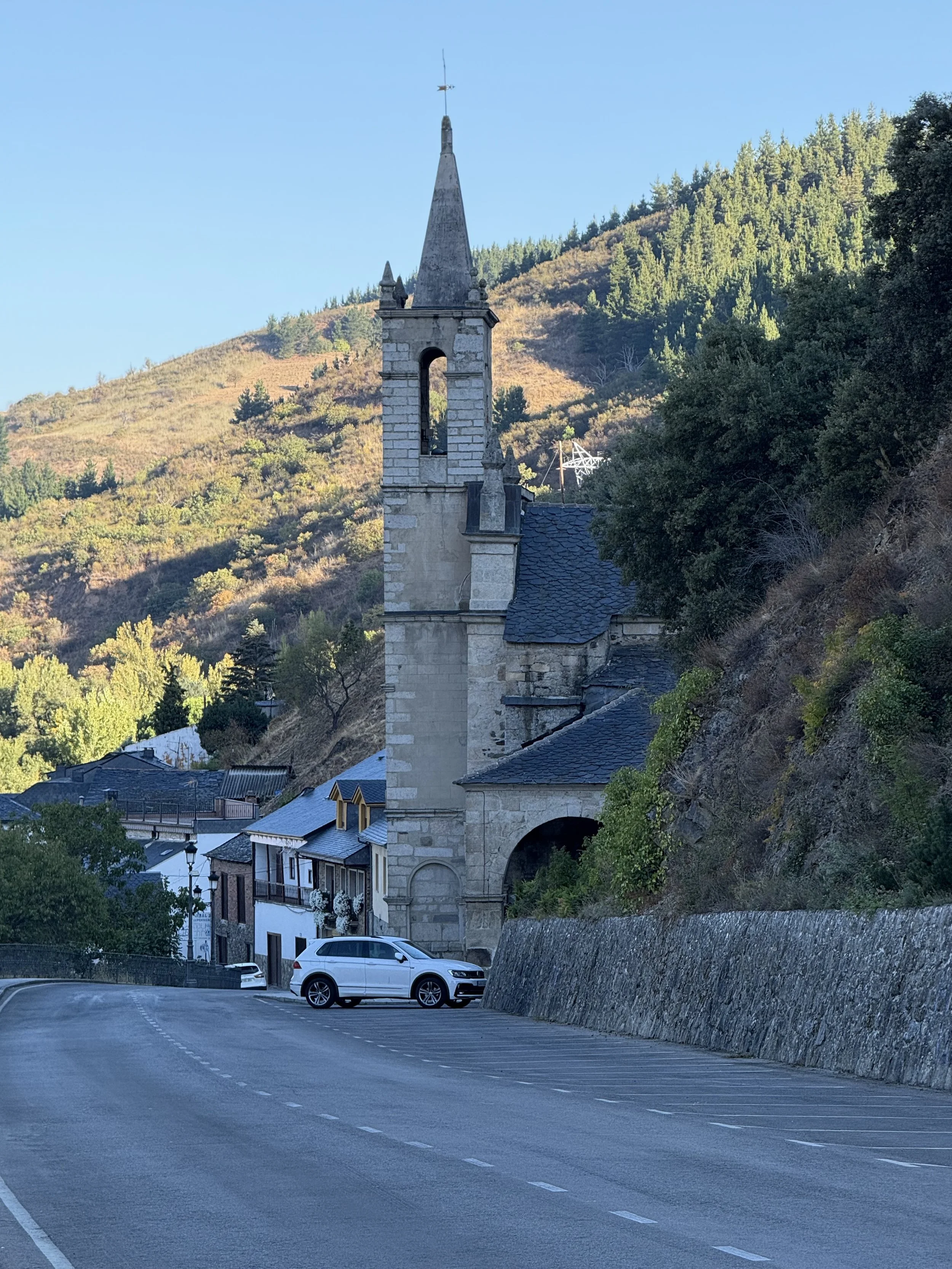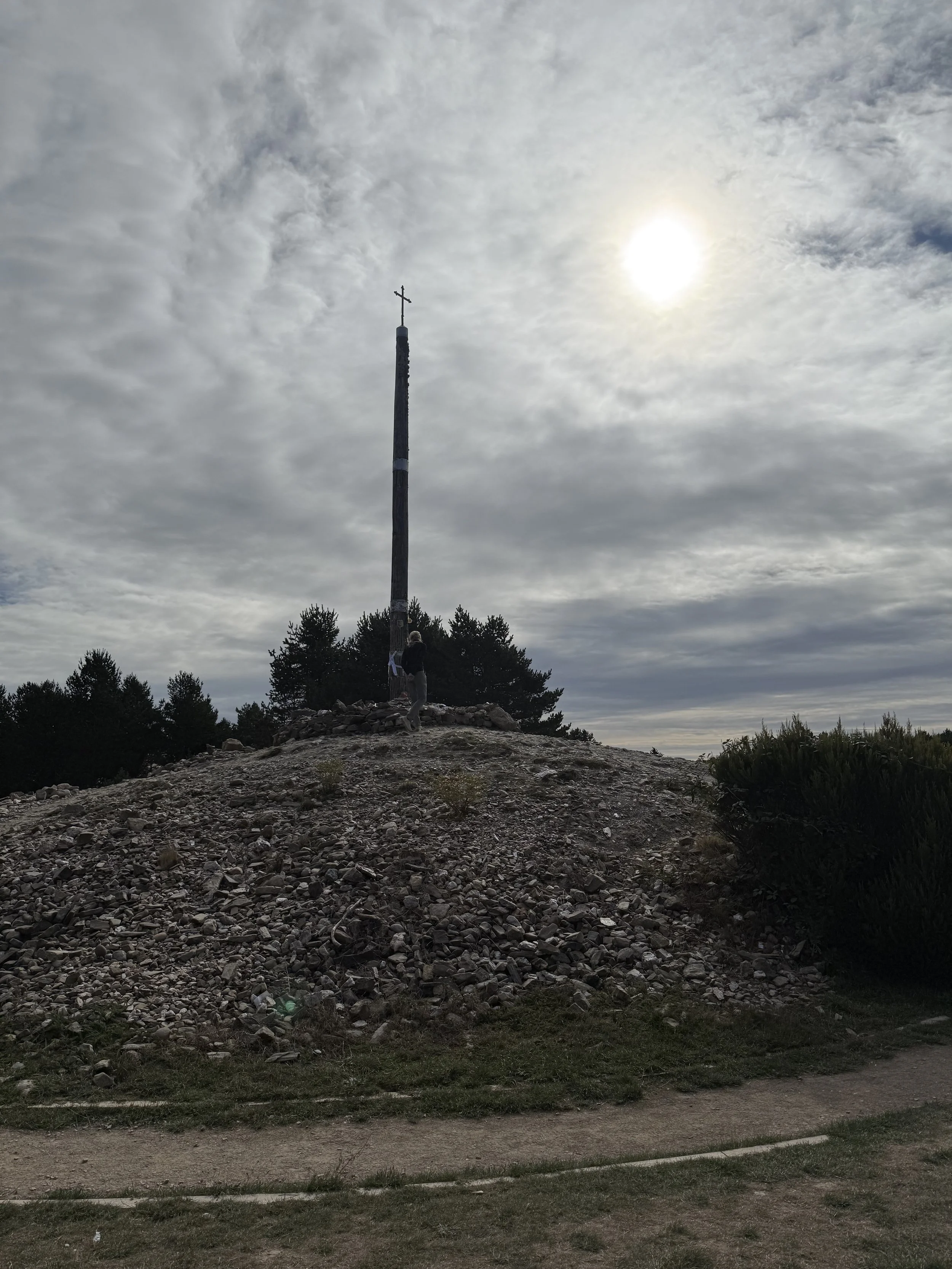The Spiritual Side of the Camino: Reflections From the Road
The Camino’s Spiritual Roots
The Camino de Santiago began in the 9th century as a Christian pilgrimage to the tomb of St. James the Apostle in Santiago de Compostela.
During the Middle Ages:
Pilgrims walked for faith and devotion, often seeking forgiveness or miracles.
Monasteries and churches along the route offered shelter and care.
The scallop shell became a symbol of the Camino, representing guidance and protection.
While the spiritual reasons for walking the Camino have evolved over time, many of these ancient traditions are still visible today. You’ll see crosses, chapels, and centuries-old churches lining the path, reminders of the generations of pilgrims who came before.
Why People Walk Today: A Modern Spiritual Journey
Today, pilgrims come from all over the world and from every walk of life. Some still walk for traditional religious reasons, but many others are drawn to the Camino for different forms of spiritual growth.
Common motivations include:
Healing from grief or loss – Walking as a way to process emotions and find peace.
Life transitions – Marking a new chapter, such as retirement, graduation, or recovering from illness.
Seeking clarity – Taking time away from daily distractions to reflect and make decisions.
Adventure with meaning – Experiencing the beauty of Spain while connecting to something deeper.
One of the most beautiful things about the Camino is that everyone’s reasons are valid. You don’t need to have it all figured out when you start. Often, your purpose becomes clearer with each step you take.
Related post: The History of the Camino de Santiago and Why It’s Still Relevant Today
A beautiful cross on top of a mountain peak.
Spiritual Practices Along the Camino
While walking, you’ll have many opportunities to nurture your spirit, no matter your beliefs. Here are some ways to make your journey more intentional:
1. Morning Reflection
Begin each day with a quiet moment before you start walking. This might include prayer, journaling, or simply setting an intention for the day ahead.
2. Mindful Walking
The Camino encourages you to slow down and be fully present. Pay attention to:
The rhythm of your breath and footsteps
The sounds of nature
The beauty of the landscape around you
Walking becomes a moving meditation, helping you clear your mind and connect with the moment.
FOLLOW THE CAMINO CHRONICLES
A beautiful church in Molinaseca, Spain along the Camino de Santiago
3. Visiting Churches and Chapels
Along the Camino, you’ll encounter many historic churches and chapels. Even if you’re not religious, stepping inside these sacred spaces can be a powerful experience.
Some pilgrims choose to:
Light a candle for a loved one
Attend a pilgrim’s mass in towns like Santiago or León (We attended several Pilgrims Masses, they are precious memories.)
Pause for a moment of gratitude or prayer
4. Journaling Your Journey
Writing down your thoughts each day helps capture the spiritual growth you’re experiencing. It can also be a source of encouragement when you face challenges.
Consider recording:
What inspired you today
How you’re feeling physically and emotionally
Encounters with other pilgrims
Insights or moments of gratitude
Related post: The History of the Camino de Santiago and Why It’s Still Relevant Today
There are so many beautiful places to top and enjoy a quiet moment of reflection.
The Challenges That Shape Us
The Camino is not always easy. Blisters, fatigue, and unexpected setbacks are part of the journey.
Yet these challenges often lead to the most profound growth.
Physical struggles teach perseverance and resilience. So true.
Lonely moments help you connect with yourself more deeply.
Acts of kindness from strangers remind you of the goodness in the world. You will be amazed at the kindess of strangers.
Personal experience: I got a huge blister on day 3. I went to a pharmacy to get some blister supplies. The pharmacist sat me down and looked at my foot. Then she shopped around the pharmacy getting supplies. She washed my foot, put an antibiotic on my blister and bandaged me, like I was her precious child. I was so touched. I felt like she prayed over me for days. The blister was healed in two and a half days.
Looking back, many pilgrims say the hardest days were also the most meaningful.
Related Post: Understanding Currency, ATMs, and Payments Along the Camino
Embracing the Camino Community
One of the most spiritual aspects of the Camino is the community of pilgrims you’ll meet along the way.
You’ll share meals, stories, and laughter with people from around the world. These connections often feel like a gift—proof that even though we come from different cultures and beliefs, we’re united by our shared journey.
Some ways to connect deeply:
Walk alongside someone for a while and simply listen.
Share a meal and talk about your day’s highlights and struggles.
Offer encouragement to someone who’s having a hard day.
These moments of connection often become some of the most treasured memories of the Camino.
Personal experience: One of my most precious memories is meeting Bob at a communal dinner. We shared our stories of struggles in our lives and cried together. Bob told me that he had given his life to Christ at the Iron Cross, along the Camino trail. After dinner, we gave each other a huge hug, as if we were mother and son. I still think of Bob so often.
The Iron Cross at the highest peak along the Frances Way of the Camino de Santiago. Where pilgrims leave their burdens at the foot of the cross.
Internal Linking Suggestions
Encourage readers to explore more Camino Chronicles content:
The History of the Camino de Santiago and Why It’s Still Relevant Today
Understanding Currency, ATMs, and Payments Along the Camino
Camino on a Budget: 10 Money-Saving Tips for Pilgrims
The Complete Packing List for the Camino de Santiago (What You Really Need)
My Reflections From the Road
As I prepared for my own Camino, I was deeply moved by the stories I’d read and the pilgrims I’d spoken with. I’ve learned that the Camino has a way of revealing what’s truly important.
It strips away the noise and distractions of everyday life, leaving space for:
Gratitude
Connection
Healing
Clarity
There were rough days when I was tired, sore, and questioning how I was ever going to walk 500 miles. But I also had many moments of breathtaking beauty, deep peace, and unexpected joy.
Conclusion: Walking Your Own Spiritual Path
The Camino de Santiago is a journey for the soul as much as the body. Whether you’re walking for faith, healing, adventure, or self-discovery, the experience will meet you where you are.
As you take each step, remember that you are part of something greater—a tradition that spans centuries and connects countless pilgrims.
When you reach Santiago, the true treasure won’t just be the Compostela certificate or even the cathedral itself. It will be the transformation that happened within you along the way.
Call-to-Action:
If you’re planning your own pilgrimage, continue to explore other posts on The Camino Chronicles and follow @Camino.Chronicles for more resources, reflections, and tips to help you prepare for this life-changing journey.
Buen Camino,
Renae



